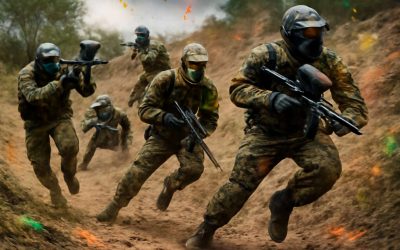Paintball is a game in which players compete to eliminate opposing players by shooting them with paint-filled balls launched from compressed gas powered guns, called markers. The gun consists of a trigger frame with the valve and bolt assembly, a barrel, and a loader. The marker is fueled by carbon dioxide (CO2) or high pressure air (HPA), and can be operated in several different ways, such as pump/bolt action, double-action, throwback semi automatic, and blowback semi automatic.
The trigger of the marker is actuated by a finger or thumb, and when pulled, disengages the sear from the bolt. The main spring then propels the hammer backward against the valve pin to open a passage from chamber 1 to chamber 2. This allows compressed gas to flow through the powertube and bolt, propelling the loaded paintball forward. The hammer is then reset by the main spring, and the marker is ready to be cocked for the next shot.
Most competitive rules specify that a marker must be semi-automatic, meaning it can fire one ball per trigger pull. However, a player can customize their electronic marker to allow more shots per trigger pull, which is known as ramping. This is prohibited in many tournaments and commercial fields due to the fact that a paintball fired at a higher velocity than what is allowed can severely injure or kill a player.
The hopper is the container that holds paintballs for the marker to fire. The hopper is usually made of aluminum to reduce its weight and is designed with a specific bore size that matches the paintball size that it will hold. The hopper is attached to the body of the marker, and can be either a gravity feed or a force-feed. Gravity feed hoppers are large containers that hold between ten and twenty paintballs, and rely on gravity to load them into the marker. Agitating and force-feed hoppers are also available, which use a small motor and propeller within the hopper to forcibly feed paintballs into the breech of the marker for quicker feeding.
The propane tank, featured only on the Tippmann C3, is a very uncommon type of fuel used in the sport. It operates much like the High Pressure Air and CO2 tanks, but rather than releasing gases directly to propel a paintball, it ignites in a combustion chamber and the expanding gas opens a valve that lets the paintball fly out of the barrel. The propane tank also offers an advantage in that it can be purchased at most hardware stores, unlike the compressors and pre-filled tanks required for High Pressure Air and CO2 markers.



0 Comments